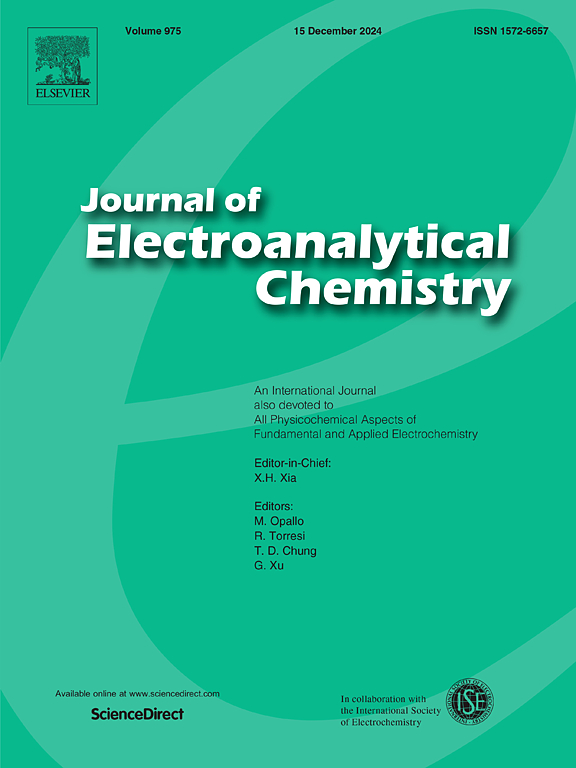Enhancing the oxygen evolution performance by introducing Pd-Cu alloy supported rod-like hollow titanium dioxide
IF 4.1
3区 化学
Q1 CHEMISTRY, ANALYTICAL
引用次数: 0
Abstract
Electrocatalytic water splitting shows great potential for generating renewable and clean energy. However, its broader application is impeded by some critical factors such as the high cost of catalysts and the low energy efficiency and stability issues, especially for the oxygen evolution reaction (OER). In this study, a hollow rod-shaped TiO2-X-Pd3Cu catalyst with sufficient oxygen vacancies were synthesized using an alcohol-thermal method followed by hydrazine hydrate treatment. The hollow structure could greatly improve mass transfer while oxygen vacancies introduce more catalytic active sites. To further enhance the electrocatalytic activity, a series of palladium-copper (Pd-Cu) alloy with different ratios was loaded onto the TiO2-X substrates. According to the experimental results, TiO2-X-Pd3Cu demonstrated the highest OER activity with the lowest overpotential of 230 mV at 10 mA·cm−2 and 599 mV at 100 mA·cm−2. This work highlights the potential of using defect-engineered TiO2-X combined with Pd-Cu alloys for cost-effective as efficient OER catalysts.
求助全文
约1分钟内获得全文
求助全文
来源期刊
CiteScore
7.80
自引率
6.70%
发文量
912
审稿时长
2.4 months
期刊介绍:
The Journal of Electroanalytical Chemistry is the foremost international journal devoted to the interdisciplinary subject of electrochemistry in all its aspects, theoretical as well as applied.
Electrochemistry is a wide ranging area that is in a state of continuous evolution. Rather than compiling a long list of topics covered by the Journal, the editors would like to draw particular attention to the key issues of novelty, topicality and quality. Papers should present new and interesting electrochemical science in a way that is accessible to the reader. The presentation and discussion should be at a level that is consistent with the international status of the Journal. Reports describing the application of well-established techniques to problems that are essentially technical will not be accepted. Similarly, papers that report observations but fail to provide adequate interpretation will be rejected by the Editors. Papers dealing with technical electrochemistry should be submitted to other specialist journals unless the authors can show that their work provides substantially new insights into electrochemical processes.

 求助内容:
求助内容: 应助结果提醒方式:
应助结果提醒方式:


